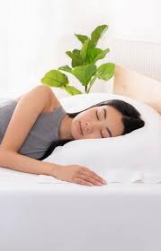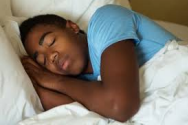






Sleep Hygiene:

Sleep hygiene is a variety of different Sleep hygiene is a variety of different practices and habits that are necessary to have good nighttime sleep quality and full daytime alertness.
Healthy sleep is important for both physical and mental health. It can also improve productivity and overall quality of life.
One of the most important sleep hygiene practices is to spend an appropriate amount of time asleep in bed, not too little or too excessive.
Healthy Sleeping Tips
- Limiting daytime naps to 30 minutes. Napping does not make up for inadequate nighttime sleep. However, a short nap of 20-30 minutes can help to improve mood, alertness and performance.
- If you have trouble sleeping, avoid naps, especially in the afternoon. If you find that you can’t fall asleep at bedtime, eliminating even short catnaps may help.
- Avoiding stimulants such as caffeine, alcohol and nicotine in the evening, because they can disrupt sleep.
- Exercising to promote good quality sleep. As little as 10 minutes of aerobic exercise, such as walking or cycling, can drastically improve nighttime sleep quality. For the best night’s sleep, most people should avoid strenuous workouts close to bedtime. However, the effect of intense nighttime exercise on sleep differs from person to person, so find out what works best for you.
- Steering clear of food that can be disruptive right before sleep. Heavy or rich foods, fatty or fried meals, spicy dishes, citrus fruits, and carbonated drinks can trigger indigestion for some people. When this occurs close to bedtime, it can lead to painful heartburn that disrupts sleep. If you can, avoid eating large meals for two to three hours before bedtime. Try a light snack 45 minutes before bed if you’re still hungry.
- Ensuring adequate exposure to natural light. This is particularly important for individuals who may not venture outside frequently. Exposure to sunlight during the day, as well as darkness at night, helps to maintain a healthy sleep wake cycle.
- Stick to a sleep schedule of the same bedtime and wake up time, even on the weekends. This helps to regulate your body’s clock and could help you fall asleep and stay asleep for the night.
- Establishing a regular relaxing bedtime ritual. A regular nightly routine helps the body recognize that it is bedtime. Your body needs time to shift into sleep mode. Wind down. This could include taking warm shower or bath, or light stretches or reading. For some people, using an electronic device such as a laptop can make it hard to fall asleep, because the particular type of light emanating from the screens of these devices is activating to the brain. If you have trouble sleeping, avoid electronics before bed or in the middle of the night. Staying away from bright lights helps separate your sleep time from activities that can cause excitement, stress or anxiety which can make it more difficult to fall asleep, get sound and deep sleep or remain asleep. When possible, try to avoid emotionally upsetting conversations and activities before attempting to sleep
- Making sure that the sleep environment is pleasant. Mattress and pillows could make a difference. It helps if your mattress is comfortable and supportive. The one you have been using for years may have exceeded its life expectancy – about 9 or 10 years for most good quality mattresses. Have comfortable pillows and make the room attractive and inviting for sleep but also free of allergens that might affect you and objects that might cause you to slip or fall if you have to get up during the night. The bedroom should be cool for optimal sleep - between 60 and 67 degrees. Bright light from lamps, cell phone and TV screens can make it difficult to fall asleep, so turn those light off or adjust them when possible. Consider using eye shades, ear plugs, “white noise” machines, humidifiers, fans and other devices that can make the bedroom more relaxing.
- If you can’t sleep, go into another room and do something relaxing until you feel tired. It is best to take work materials, computers and televisions out of the sleeping environment. If you associate a particular activity or item with anxiety about sleeping, omit it from your bedtime routine.
- If you’re still having trouble sleeping, don’t hesitate to speak with your doctor or to find a sleep professional. You may also benefit from recording your sleep in a Sleep Diary to help you better evaluate common patterns or issues you may see with your sleep or sleeping habits



How much sleep do I really need?

Though research cannot pinpoint an exact amount of sleep need by people at different ages, the new chart below, which features minimum and maximum ranges for health as well as “recommended” windows, identifies the “rule-of-thumb” amounts experts agree upon.

Nevertheless, it’s important to pay attention to your own individual needs by assessing how you feel on different amounts of sleep. A summary of new recommendations include:
- Newborns (0-3 months): Sleep range narrowed to 14-17 hours each day (previously it was 12-18)
- Infants (4-11 months): Sleep range widened two hours to 12-15 hours (previously it was 14-15)
- Toddlers (1-2 years): Sleep range widened by one hour to 11-14 hours (previously it was 12-14)
- Preschoolers (3-5): Sleep range widened by one hour to 10-13 hours (previously it was 11-13)
- School age children (6-13): Sleep range widened by one hour to 9-11 hours (previously it was 10-11)
- Teenagers (14-17): Sleep range widened by one hour to 8-10 hours (previously it was 8.5-9.5)
- Younger adults (18-25): Sleep range is 7-9 hours (new age category)
- Adults (26-64): Sleep range did not change and remains 7-9 hours
- Older adults (65+): Sleep range is 7-8 hours (new age category)

References:
